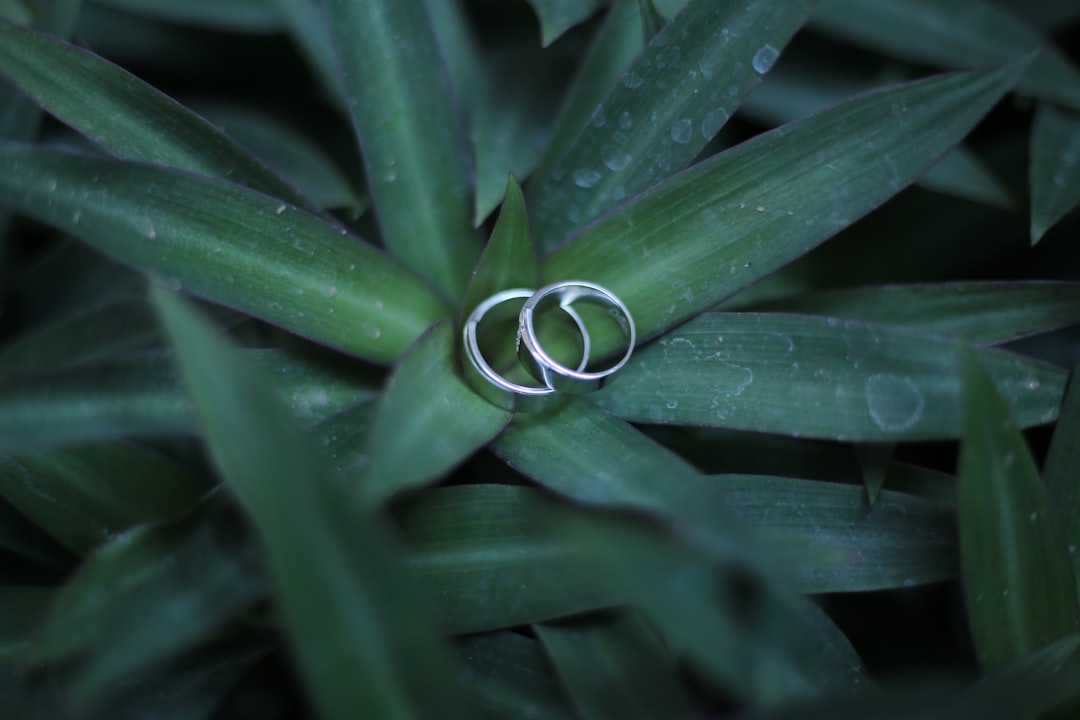Garden hoes are indispensable tools in the arsenal of any gardener, whether they are a novice tending to their first patch of soil or a seasoned horticulturist managing expansive plots. These versatile implements have been utilized for centuries, evolving in design and function to meet the diverse needs of gardening enthusiasts. At their core, garden hoes are designed to cultivate soil, remove weeds, and shape garden beds, making them essential for maintaining healthy plants and productive gardens.
The simplicity of their design belies the complexity of their applications, as different types of hoes serve distinct purposes that can significantly impact gardening efficiency and effectiveness. The history of the garden hoe is rich and varied, with evidence of their use dating back to ancient civilizations. From the rudimentary wooden implements of early farmers to the modern steel and ergonomic designs available today, the hoe has undergone significant transformations.
This evolution reflects not only advancements in materials and manufacturing techniques but also a deeper understanding of gardening practices. As gardeners become more aware of the specific tasks they need to accomplish, the demand for specialized hoes has increased, leading to a plethora of options available on the market today.
Key Takeaways
- Garden hoes are essential tools for maintaining a healthy garden and can be used for a variety of tasks such as weeding, cultivating, digging, chopping, cutting, clearing, shaping, and leveling.
- There are different types of garden hoes, including scuffle hoes, warren hoes, Dutch hoes, and draw hoes, each designed for specific gardening needs.
- When choosing the right garden hoe, consider the type of soil, the size of the area, and the specific tasks you need to accomplish in your garden.
- Basic techniques for using a garden hoe include holding it at the right angle, using a push-pull motion, and maintaining a steady rhythm to effectively work the soil.
- It’s important to maintain and care for your garden hoe by cleaning it after each use, sharpening the blade when necessary, and storing it in a dry place to prevent rust. Additionally, always follow safety precautions when using a garden hoe to avoid accidents and injuries.
Understanding the Different Types of Garden Hoes
Garden hoes come in various shapes and sizes, each tailored for specific tasks within the gardening process. The most common types include the scuffle hoe, Warren hoe, Dutch hoe, and draw hoe. Each type is designed with unique features that cater to different gardening needs, making it essential for gardeners to understand these distinctions.
The scuffle hoe, for instance, is characterized by its sharp blade that allows for easy weeding and soil cultivation just below the surface. Its design enables gardeners to push and pull the tool with minimal effort, making it ideal for maintaining weed-free beds without disturbing the surrounding soil structure. In contrast, the Warren hoe features a triangular blade that excels at digging and chopping through tougher soil.
This type of hoe is particularly useful for creating furrows or planting rows, as its pointed edge can penetrate hard ground more effectively than other designs. The Dutch hoe, with its horizontal blade, is specifically crafted for cutting weeds at their roots while allowing for a smooth gliding motion across the soil surface. Lastly, the draw hoe is designed for shaping and leveling soil, featuring a wide blade that can be pulled towards the gardener to create flat surfaces or trenches.
Understanding these differences is crucial for selecting the right tool for specific gardening tasks.
Choosing the Right Garden Hoe for Your Gardening Needs

Selecting the appropriate garden hoe involves considering several factors, including the type of gardening you engage in, the size of your garden, and your physical capabilities. For instance, if you primarily focus on weeding in established flower beds or vegetable gardens, a scuffle hoe may be your best choice due to its efficiency in removing weeds without disturbing nearby plants. On the other hand, if you are preparing new garden plots or working with compacted soil, a Warren hoe would be more suitable because of its ability to break up hard ground and create planting rows.
Additionally, personal comfort and ergonomics should play a significant role in your decision-making process.
Garden hoes come in various handle lengths and designs, which can affect how easily you can maneuver them during use. Taller gardeners may prefer longer handles to avoid excessive bending, while those with limited strength might benefit from lightweight materials or ergonomic grips that reduce strain on the hands and wrists.
Ultimately, choosing the right garden hoe is about finding a balance between functionality and comfort to enhance your gardening experience.
The Basics of Using a Garden Hoe
Using a garden hoe effectively requires understanding proper techniques and body mechanics to maximize efficiency while minimizing fatigue. When wielding a hoe, it is essential to maintain a comfortable stance with feet shoulder-width apart for stability. The grip should be firm but relaxed to allow for fluid movement without excessive tension in the hands or arms.
As you begin to use the hoe, focus on using your whole body rather than just your arms; this involves engaging your core and legs to generate power while keeping your movements smooth and controlled. The angle at which you hold the hoe can also significantly impact its effectiveness. For instance, when using a scuffle hoe for weeding, holding it at a slight angle allows the blade to glide just beneath the soil surface, effectively severing weed roots without uprooting desirable plants.
Conversely, when using a Warren hoe for digging or creating furrows, positioning the blade vertically can help penetrate tough soil more effectively. Practicing these techniques will not only improve your efficiency but also enhance your overall gardening experience.
Using a Scuffle Hoe for Weeding and Cultivating
The scuffle hoe is particularly renowned for its effectiveness in weeding and cultivating soil due to its unique design that allows for easy maneuverability. To use this tool effectively, begin by positioning yourself at one end of your garden bed. With a firm grip on the handle, push the hoe forward while keeping the blade angled slightly downward.
This motion will allow the sharp edge to slice through weeds just below the surface without disturbing the surrounding soil too much. As you work your way through the garden bed, employ a back-and-forth motion to cover more ground efficiently. This technique not only helps in uprooting weeds but also aerates the soil, promoting better drainage and root development for your plants.
It’s important to keep an eye on your movements to avoid damaging nearby plants; maintaining awareness of your surroundings will ensure that you can effectively manage weeds while preserving your garden’s integrity.
How to Use a Warren Hoe for Digging and Chopping

Effective Use of the Warren Hoe
Its triangular blade is specifically designed for penetrating hard ground, making it ideal for tasks such as creating planting rows or breaking up compacted soil. To use a Warren hoe effectively, start by positioning yourself at the edge of the area you wish to cultivate. With a firm grip on the handle, drive the blade into the soil using your body weight to assist in penetration.
Breaking Up Soil and Roots
Once you have established an initial hole or furrow, use a chopping motion to break up larger clumps of soil or roots that may be present. This technique not only prepares the ground for planting but also helps in mixing organic matter into the soil, enhancing its fertility.
Preventing Strain and Fatigue
As you work with a Warren hoe, remember to maintain proper posture; bending at your knees rather than your back will help prevent strain and fatigue during extended use.
Tips for Using a Dutch Hoe for Cutting and Clearing
The Dutch hoe is particularly effective for cutting weeds at their roots while allowing gardeners to maintain an upright posture during use. To utilize this tool effectively, begin by holding it with both hands at waist height and positioning yourself at one end of your garden bed. The horizontal blade should be angled slightly downward as you push it forward across the soil surface.
This motion allows the blade to slice through weeds just below ground level without disturbing surrounding plants. As you move along your garden bed, employ a smooth gliding motion rather than aggressive chopping actions; this will help maintain control over the tool while ensuring that you are efficiently cutting weeds without uprooting desirable plants nearby. Additionally, consider alternating between pushing and pulling motions; this can help cover more ground quickly while reducing fatigue in your arms and shoulders.
Techniques for Using a Draw Hoe for Shaping and Leveling
The draw hoe is an essential tool for shaping and leveling soil in preparation for planting or maintaining garden beds. Its wide blade allows gardeners to create flat surfaces or trenches with ease. To use a draw hoe effectively, begin by positioning yourself at one end of your garden bed with the blade facing away from you.
With a firm grip on the handle, pull the hoe towards yourself in a smooth motion while applying even pressure on the blade. As you draw the hoe towards you, focus on maintaining an even depth across the area you are working on; this will help create uniform planting conditions for seeds or transplants. If you need to create furrows or trenches for planting rows, angle the blade slightly downward as you pull it towards you; this will allow it to dig into the soil more effectively while maintaining control over its depth.
Maintaining and Caring for Your Garden Hoe
Proper maintenance of your garden hoe is crucial for ensuring its longevity and effectiveness in your gardening endeavors. After each use, take time to clean the blade thoroughly by removing any soil or debris that may have accumulated during use. A simple rinse with water followed by drying with a cloth can prevent rust formation on metal blades and prolong their lifespan.
For wooden handles, inspect them regularly for signs of wear or splintering; sanding down rough spots can enhance comfort during use. Additionally, consider applying a light coat of oil to metal parts after cleaning; this can provide an extra layer of protection against moisture and rust. Storing your garden hoe in a dry location away from direct sunlight will also help preserve its materials over time.
By taking these simple steps in maintenance and care, you can ensure that your garden hoe remains an effective tool throughout many growing seasons.
Safety Precautions When Using a Garden Hoe
While garden hoes are generally safe tools when used correctly, it is essential to observe certain safety precautions to prevent accidents or injuries during gardening activities. Always wear appropriate footwear with closed toes when using a hoe; this will protect your feet from accidental strikes or falling tools. Additionally, consider wearing gloves to protect your hands from blisters or abrasions that may occur during extended use.
When using any type of garden hoe, be mindful of your surroundings; ensure that children or pets are at a safe distance from your working area to avoid accidental injuries. Furthermore, always maintain control over your tool; avoid swinging it wildly or using excessive force that could lead to loss of balance or control over your movements. By adhering to these safety guidelines, you can enjoy gardening while minimizing risks associated with tool usage.
Mastering the Art of Using Different Garden Hoes for Efficient Gardening
Mastering the art of using different types of garden hoes can significantly enhance your gardening experience by improving efficiency and effectiveness in various tasks. Understanding each tool’s unique features allows gardeners to select the right implement for specific needs while employing proper techniques ensures optimal results in cultivating soil, weeding, digging, shaping beds, and maintaining overall garden health. By investing time in learning how to use these tools correctly and caring for them properly, gardeners can cultivate thriving gardens that yield bountiful harvests year after year.
As you delve deeper into gardening practices and refine your skills with these essential tools, you’ll find that each type of hoe offers distinct advantages that cater to different aspects of gardening work.
Embracing this knowledge not only empowers you as a gardener but also fosters a deeper connection with nature as you nurture plants from seedling to harvest.
If you are interested in learning more about gardening tools and techniques, you may also want to check out this article on how to make rose petals fall grounded. This article provides helpful tips on caring for your roses and ensuring they bloom beautifully. It’s a great resource for any gardener looking to enhance the beauty of their garden.
FAQs
What are the different types of garden hoes?
There are several types of garden hoes, including the standard flat hoe, the scuffle hoe, the warren hoe, the onion hoe, and the collinear hoe. Each type is designed for specific gardening tasks and soil types.
How do I use a garden hoe for gardening?
To use a garden hoe for gardening, hold the handle with both hands and use a pushing and pulling motion to break up soil, remove weeds, and create furrows for planting. It’s important to keep the hoe blade sharp and to use it at the right angle to avoid strain on your back and arms.
What is the difference between a scuffle hoe and a standard flat hoe?
The scuffle hoe has a loop-shaped blade that allows for a back-and-forth chopping motion, making it easier to remove weeds without disturbing the soil. The standard flat hoe has a flat blade that is better suited for breaking up soil and creating furrows.
Can I use a garden hoe for different types of soil?
Yes, different types of garden hoes are designed to work with different soil types. For example, the scuffle hoe is great for light and sandy soils, while the warren hoe is better for heavy and clay soils. It’s important to choose the right hoe for the type of soil you are working with.
How do I maintain and care for my garden hoe?
To maintain and care for your garden hoe, regularly clean the blade after each use to prevent rust and debris buildup. Keep the blade sharp with a file or sharpening stone, and store the hoe in a dry place to prevent rusting. Regular maintenance will ensure that your hoe remains effective for gardening tasks.

